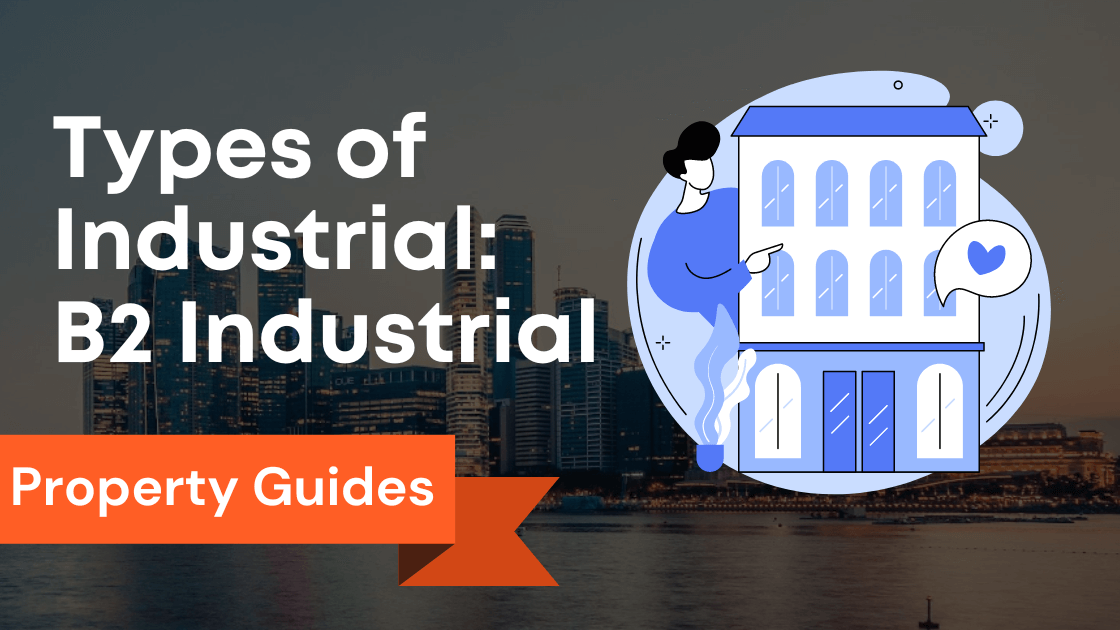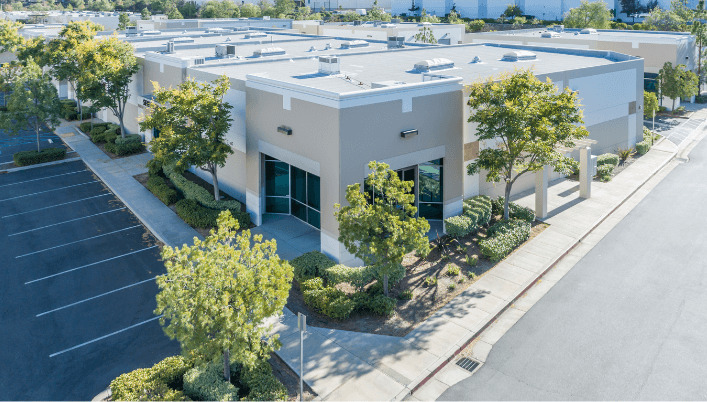
B1 Industrial properties play a crucial role in the economic development of a country.
In Singapore, B1 industrial properties are a specific category of industrial spaces that serve as essential hubs for various businesses.
http://www.youtube.com/watch?v=24UFenj1CAk
This article aims to provide a comprehensive understanding of B1 industrial properties, including their definition, significance, allowable uses, change of use regulations, and the impact of property launches on such developments.
Key Takeaways
- B1 Industrial Space Definition: B1 industrial space encompasses properties zoned for light industrial use, facilitating activities like manufacturing, assembly, and processing. It’s designed for clean, non-polluting operations.
- Economic Contribution: B1 Industrial space drives economic growth by providing facilities for various businesses. It contributes to job creation, innovation, and productivity, supporting industries like logistics and advanced manufacturing.
- Key Characteristics: B1 properties are located in designated industrial zones, ensuring proximity to similar industries. Specific allowable uses enable diverse businesses, regulated to minimize conflicts.
- Allowable Uses in B1 Industrial Zones
- B1 zones allow versatile business activities, including light industrial, warehousing, services, distribution, showrooms, and software development.
- B1 properties attract diverse businesses, from startups to established companies, fostering a mix of knowledge-based industries.
- Regulations ensure noise control, waste management, and emissions to maintain a clean industrial atmosphere.
- Change of Use Regulations for B1 Industrial Properties
- B1 properties can be converted for other uses with consultation and planning permission from relevant authorities.
- Regulations involve impact assessments, planning permission, and adherence to conditions preserving industrial integrity.
- Property Launches: Impact on B1 Industrial Developments
- Property launches significantly impact B1 industrial market, introducing new facilities and increasing supply.
- Demand from property launches drives competition, innovation, and growth within B1 industrial sector.
- Investing in B1 Industrial Developments
- Location’s accessibility, property type, growth potential, and regulatory environment are key factors in investing in B1 industrial developments.
- Trends in B1 Industrial Property Market
- Trends include demand for eco-friendly features, energy efficiency, smart technologies, and mixed-use developments in B1 properties.
- Sustainable and innovative industrial spaces shape the future of B1 industrial property market.
- Understanding B1 Industrial: Everything You Need to Know
- B1 industrial properties suit various businesses, offering open floor plans, natural lighting, and strategic locations.
- B1 spaces support startups and small businesses with fair rental rates, fostering growth and innovation.
- Clean and Light Industries in B1 Zones
- Clean and light industries promote sustainable practices, innovation, and economic growth within B1 zones.
- Adherence to regulations ensures harmonious coexistence between primary industries and supporting trades.
- Industrial Space Design: Floor Height and Quantum Controls
- Adequate floor height in B1 spaces supports efficient operations, machinery installation, and future expansion.
- Quantum controls maintain a balanced environment by regulating allowable activities in B1 zones.
- B1 Industrial for Software Development
- B1 zones are ideal for software development due to suitable infrastructure, open layouts, and high-speed internet connectivity.
- Software developers should consider zoning regulations, amenities, and proximity to talent pools.
- Future-Proofing B1 Industrial Zones: Adapting to Changing Needs
- Future-proofing B1 zones involves adapting to trends like AI, automation, and IoT, ensuring infrastructure supports emerging industries.
- Collaboration between stakeholders, upgrades, and innovation maintain the competitiveness of B1 zones.
Defining B1 Industrial Space and Its Significance

What is B1 industrial space?
B1 industrial space refers to a type of industrial property that allows for a wide range of business activities.
These properties are typically zoned for light industrial use, which includes activities such as manufacturing, assembly, and processing.
B1 industrial properties are designed to provide suitable spaces for businesses that require clean and non-polluting operations.
They often consist of light industrial buildings that offer flexible floor plans to meet the diverse needs of various industries.
Why is B1 industrial space important?
B1 industrial space serves as a significant driver for economic growth and development.
These properties provide the necessary facilities for businesses to carry out their operations, contributing to job creation, innovation, and productivity.
Moreover, B1 industrial spaces play a crucial role in supporting industries such as logistics, research and development, and advanced manufacturing.
They offer an ideal environment for businesses to thrive and contribute to the overall economic competitiveness of Singapore.
http://www.youtube.com/watch?v=xK8kJu2e5uc
What are the key characteristics of B1 industrial properties?
B1 industrial properties have several key characteristics that distinguish them from other types of industrial spaces.
Firstly, they are typically located in designated industrial zones, ensuring that businesses remain in proximity to similar industries.
Additionally, B1 industrial properties have specific allowable uses, meaning that they can house various types of businesses, including manufacturing, production, warehousing, and ancillary services.
These zones often incorporate specific regulations, such as nuisance buffer zones, to minimize any potential conflicts between industrial and non-industrial activities.
Exploring Allowable Uses in B1 Industrial Zones
What are the allowable uses in B1 industrial zones?
B1 industrial zones allow for a diverse range of business activities.
Some of the allowable uses in these zones include light industrial activities, warehousing, service industries, distribution activities, showrooms, and software development.
B1 industrial properties are versatile, catering to the needs of a wide range of businesses while maintaining a focus on clean and non-polluting operations.
What types of businesses can operate in B1 industrial properties?
B1 industrial properties are suitable for businesses involved in light or clean industries, which include manufacturing, production, research and development, assembly, and distribution.
With their flexible floor plans and suitable infrastructure, these properties attract a wide array of businesses, ranging from small startups to established companies.
B1 industrial properties also serve as an ideal space for businesses engaged in core media activities, software development, and other knowledge-based industries.
What are the restrictions on usage in B1 industrial zones?
While B1 industrial zones offer a range of allowable uses, there are certain restrictions to ensure that the surrounding environment is not negatively affected.
These restrictions may include regulations on noise levels, waste disposal, and emissions to maintain a clean and non-polluting industrial atmosphere.
The Singapore Urban Redevelopment Authority (URA) oversees the regulations and guidelines for industrial developments to ensure that proper planning permissions and relevant approvals are obtained by business owners and property developers.
Navigating Change of Use Regulations for B1 Industrial Properties
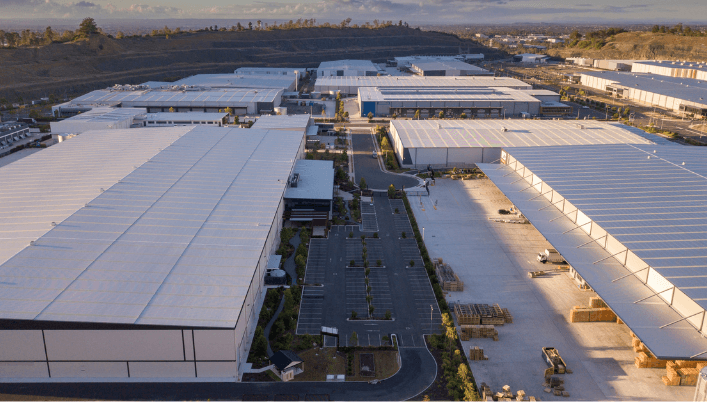
Can B1 industrial properties be converted for other uses?
B1 industrial properties can be converted for other uses under certain circumstances.
However, there are regulations and procedures in place to ensure that any changes in use do not disrupt the overall integrity of the industrial zone.
The relevant authority, such as the URA, must be consulted, and planning permission must be obtained before undertaking any change of use in B1 industrial properties.
What are the regulations around changing the use of B1 industrial properties?
When it comes to changing the use of B1 industrial properties, several regulations must be followed.
These regulations aim to strike a balance between preserving the integrity of industrial zones and accommodating the changing needs of businesses.
The guidelines typically involve conducting impact assessments, obtaining planning permission, and adhering to specific conditions, such as maintaining a certain percentage of the floor area for industrial activities.
What are the steps involved in obtaining approval for change of use in B1 industrial properties?
Obtaining approval for a change of use in B1 industrial properties involves several steps.
Firstly, the property owner needs to assess the feasibility of the proposed change and the impact it may have on the surrounding area.
The relevant authority, such as the URA, must be engaged for advice on regulations and guidelines.
Next, a formal application for planning permission must be submitted, along with supporting documents and assessments.
The process may involve consultations, reviews, and negotiations before the final approval is granted.
Property Launches: The Impact on B1 Industrial Developments
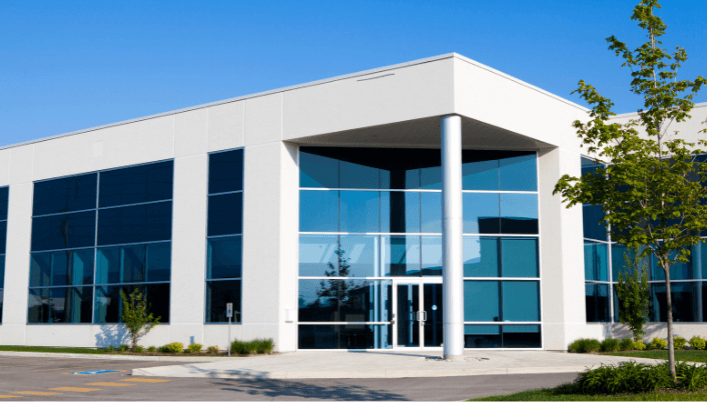
How do property launches affect the B1 industrial market?
Property launches have a significant impact on the B1 industrial market.
These launches provide opportunities for businesses to acquire or rent industrial properties that suit their specific requirements.
Property launches also contribute to the overall development of the B1 industrial sector by introducing new and modern facilities, improving infrastructure, and increasing the available supply.
The demand generated by property launches fosters competition and innovation within the B1 industrial market.
What factors should be considered when investing in B1 industrial developments?
Investing in B1 industrial developments requires careful consideration of various factors.
Firstly, the location plays a crucial role as it determines the accessibility and proximity to suppliers, customers, and transportation networks.
The type of industrial property and its suitability for the intended use must also be assessed.
Other factors to consider include the potential for future growth and demand, the stability of the industrial market, and the regulatory environment governing B1 industrial properties.
What are the trends in the B1 industrial property market?
The B1 industrial property market is dynamic and influenced by various trends.
One notable trend is the increasing demand for innovative and sustainable industrial developments.
Businesses now prioritize eco-friendly features, energy efficiency, and smart technologies when choosing their industrial spaces.
Additionally, there is growing interest in mixed-use developments that combine industrial, residential, and commercial components.
Such developments create vibrant environments that cater to the diverse needs of businesses, employees, and the community at large.
Predominant Industrial Activities: Core Media and More

What are the core media activities within the b1 industrial zone?
The b1 industrial zone is primarily home to core media activities.
These include industries such as film production, broadcasting, and multimedia development.
The b1 industrial properties provide the necessary infrastructure and space required for these specific industries to thrive and grow.
What other predominant activities are allowed in b1 industrial properties?
Alongside the core media activities, b1 industrial properties also allow for a range of other predominant activities.
These may include light industry operations, warehouse facilities, and retail properties.
The diversity of activities permitted within the b1 industrial zone provides a good balance for businesses looking to establish themselves in this sector.
How are business park activities different from core media activities?
While core media activities focus on creative industries and content production, business park activities encompass a broader range of businesses.
Within the b1 industrial zone, business parks house office buildings, residential properties, and retail establishments.
These areas provide a mix of commercial and residential spaces that cater to a wide array of needs.
The Role of Ancillary Activities in B1 Industrial Zones
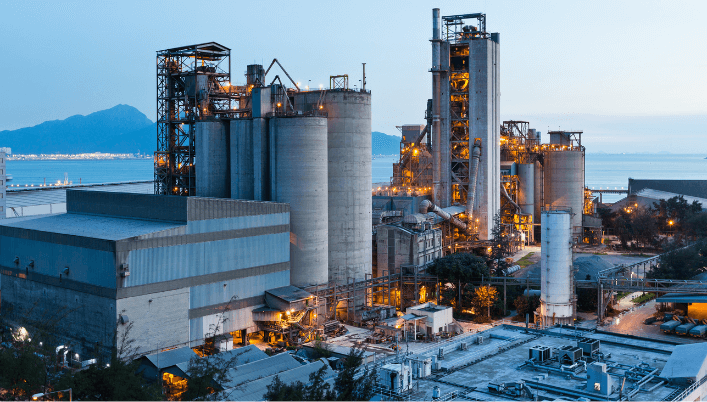
What are ancillary activities and what role do they play in b1 industrial zones?
Ancillary activities refer to trades or businesses that support and complement the primary activities within a b1 industrial zone.
These activities are essential for the smooth functioning of the core industries.
They can include services such as maintenance, logistics, and transportation.
The presence of ancillary activities enhances the overall efficiency of operations within the b1 industrial zone.
How are ancillary activities regulated within the b1 industrial properties?
Ancillary activities within the b1 industrial zone are subject to specific regulations to ensure they do not exceed their intended scope.
These regulations aim to maintain a proper balance between the primary industries and supporting trades.
Adhering to these regulations helps ensure that ancillary activities do not dominate the b1 industrial properties but instead contribute to their overall functionality.
What trades are considered as ancillary activities within the b1 industrial properties?
Various trades can be considered ancillary activities within the b1 industrial properties.
These may include property maintenance, waste management, security services, and supply chain management.
By providing these essential services, ancillary activities contribute to the smooth operations of the core industries.
Noise and Nuisance Buffer: Ensuring Clean and Quiet Operations
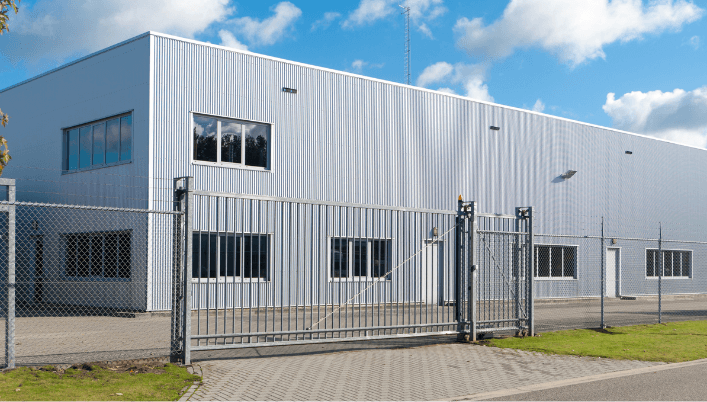
What is the purpose of a noise and nuisance buffer in b1 industrial zones?
A noise and nuisance buffer is an essential aspect of b1 industrial zones.
It serves the purpose of minimizing disturbances to neighboring properties caused by noise, pollution, or other nuisances.
This buffer zone creates a boundary that protects both the b1 industrial properties and the surrounding residential and commercial areas.
What are the requirements for ensuring clean and quiet operations in b1 industrial properties?
To ensure clean and quiet operations, b1 industrial properties must adhere to specific requirements.
They need to implement measures and practices that address noise control, waste management, and pollution prevention.
By meeting these requirements, the businesses operating within the b1 industrial zone can minimize their impact on the surrounding environment.
How does the safety buffer protect neighboring properties from noise and nuisance?
The safety buffer acts as a physical barrier between the b1 industrial zone and its neighboring properties.
This buffer helps mitigate the effects of noise and nuisance caused by industrial activities.
The buffer zone ensures that the neighboring residential and commercial properties are shielded from excessive disturbances, creating a more harmonious and livable environment for everyone.
Reshaping the Landscape: B1 Industrial vs. B2 Industrial
What are the main differences between b1 and b2 industrial properties?
When it comes to industrial properties, it’s essential to understand the differences between the various zoning classifications.
B1 industrial properties are predominantly used for core media activities, light industry operations, and retail properties.
On the other hand, b2 industrial properties cater to heavier industries such as manufacturing and warehousing.
The distinction between the two allows businesses to find the specific space that suits their operational needs.
What types of industrial sites fall under the b1 category?
B1 industrial sites encompass a variety of industrial spaces, including factories, workshops, and production studios.
These sites cater mainly to industries involved in core media activities, light industrial operations, and retail businesses.
B1 industrial sites are designed to accommodate the infrastructure and facilities necessary for these specific industries to thrive.
What types of industrial activities are permitted in b2 industrial properties?
B2 industrial properties are primarily designated for heavier industrial activities.
These may include manufacturing facilities, warehouses, and logistics centers.
B2 industrial properties provide the space, infrastructure, and amenities needed for larger-scale industrial operations.
The industrial activities permitted within these properties often involve the production and storage of goods on a larger scale compared to b1 industrial properties.
The Power of Industrial Usage: Balancing Business Needs
How does industrial usage impact the rates for b1 industrial properties?
Industrial usage has a direct impact on the rates of b1 industrial properties.
The specific type of industrial activity being carried out within a property can influence its rental income or monthly income potential.
Depending on the nature of the business, b1 industrial properties may command higher rental rates due to the specialized infrastructure and facilities they offer to support industrial activities.
What are the special industries that can operate within the b1 industrial zoning?
b1 industrial zoning allows for the operation of special industries.
These may include film production studios, post-production facilities, and knitting mills.
These specialized industries require specific infrastructure and equipment, which the b1 industrial zone caters to.
The presence of these special industries enhances the diversity and vibrancy of the b1 industrial landscape.
What considerations need to be made when balancing business needs in selecting b1 sites?
When selecting b1 sites for business purposes, several considerations need to be made.
Firstly, businesses need to assess the suitability of the site for their specific industry and operational requirements.
Factors such as access to transportation, availability of utilities, and proximity to suppliers or customers should all be taken into account.
Additionally, businesses should also consider the rental rates, property tax implications, and any legal requirements associated with operating within the b1 industrial zone.
From Offices to Workspaces: B1 Industrial for E-Business Activities
Overview of B1 Industrial Properties
B1 industrial properties refer to spaces zoned for light industrial activities.
They are primarily designed for e-business activities, including research and development (R&D), software development, and clean and light manufacturing.
B1 properties are characterized by their flexibility, providing businesses with the opportunity to operate in a wide range of trades.
Advantages of B1 Industrial Spaces for E-Business Activities
Choosing a B1 industrial space for e-business activities offers several advantages.
Firstly, B1 properties are strategically located, providing convenient access to transportation networks and key business hubs.
This ensures efficient logistics and enables businesses to reach their target customers effectively.
Secondly, B1 industrial spaces are designed to accommodate modern business needs.
They often feature open floor plans, high ceilings, and ample natural lighting, creating a conducive environment for productivity and creativity.
This makes them ideal for software development companies and other technology-driven businesses.
Lastly, B1 industrial properties offer affordable rental and leasing options.
The government sets a flat rate for B1 spaces, ensuring fair and reasonable costs for businesses.
This encourages startups and small businesses to establish their presence and thrive in the market.
Key Considerations for Setting Up E-Businesses in B1 Industrial Areas
When considering setting up an e-business in a B1 industrial area, it is important to understand and adhere to the guidelines and regulations.
Each B1 zone has specific allowable trades, which determine the types of businesses that can operate within the area.
It is essential to ensure that your business activity aligns with the zoning requirements.
Additionally, it is important to consider the infrastructure and amenities available in the B1 industrial area.
Look for locations that have access to high-speed internet, reliable power supply, and other essential utilities required for e-business activities.
This will ensure the smooth operation of your business.
Furthermore, consider the floor height and quantum controls in the B1 industrial space.
The floor height determines the vertical space available for your operations, allowing for efficient storage, equipment installation, and future expansion.
Understanding and optimizing quantum controls ensures that your business activities comply with the regulations set by the government.
Sustainable Growth: Clean and Light Industries in B1 Zones
Exploring Clean and Light Industries in B1 Industrial Zones
Clean and light industries are a key focus in B1 industrial zones.
These industries prioritize sustainable practices, energy efficiency, and environmental friendliness.
They include sectors such as technology manufacturing, R&D, and green technology development.
Benefits of Supporting Sustainable Growth in B1 Zones
Supporting sustainable growth in B1 industrial zones brings several benefits to businesses and the environment.
Clean and light industries contribute to reducing carbon emissions, promoting a greener future.
They also provide opportunities for innovation and the development of new technologies, fostering economic growth and competitiveness.
Guidelines for Setting Up Clean and Light Industries in B1 Areas
When planning to set up a clean and light industry in a B1 area, it is important to follow the guidelines and regulations set by the authorities.
These guidelines ensure that businesses adopt sustainable practices and maintain a harmonious relationship with the environment.
Considerations such as waste management, energy efficiency, and proper disposal of hazardous materials should be taken into account.
Industrial Space Design: Floor Height and Quantum Controls
Importance of Floor Height in B1 Industrial Spaces
The floor height is a crucial factor in the design of B1 industrial spaces.
It determines the vertical space available for operations and influences the efficiency of workflow and storage systems.
Adequate floor height allows for the installation of machinery, equipment, and shelving units, facilitating smooth operations and future expansion.
Quantum Controls in B1 Industrial Zones: Understanding the Basics
Quantum controls refer to the regulations set by the government to ensure that businesses in B1 industrial zones adhere to the allowable activities and trades.
These controls aim to maintain a balanced environment in the B1 areas, preventing the clustering of heavy production activities that may disrupt the surrounding ecosystem.
Best Practices for Optimal Industrial Space Design in B1 Areas
To optimize industrial space design in B1 areas, it is important to consider factors such as workflow efficiency, safety standards, and future scalability.
Proper layout planning, ergonomic design, and utilization of advanced technology can significantly enhance the productivity and overall performance of businesses operating in B1 industrial spaces.
Harnessing Technology: B1 Industrial for Software Development
Why B1 Industrial Zones are Ideal for Software Development
B1 industrial zones are ideal for software development businesses due to their suitable environment and infrastructure.
These zones offer high-speed internet connectivity, reliable power supply, and other essential amenities required for smooth software development operations.
Additionally, the open floor plans and natural lighting in B1 spaces create a conducive environment for creativity and collaboration.
Key Infrastructure and Amenities for Software Development in B1 Areas
Software development requires reliable infrastructure and amenities to support the development and testing processes.
B1 areas offer access to cutting-edge technology infrastructure, such as server rooms, data centers, and secure networking facilities.
These facilities ensure seamless software development and efficient deployment.
Considerations for Setting Up a Software Development Business in B1 Zones
When setting up a software development business in a B1 zone, it is important to consider factors such as proximity to talent pools, access to potential clients, and availability of supportive business services.
Understanding the zoning regulations and complying with applicable guidelines ensures a smooth setup and operation of the business.
Future-Proofing B1 Industrial Zones: Adapting to Changing Needs
Anticipating Changing Needs: Future-Proofing B1 Industrial Zones
The business landscape is constantly evolving, and B1 industrial zones need to adapt to meet the changing needs of industries.
Future-proofing these zones involves anticipating trends and technological advancements, and ensuring that the infrastructure and amenities are capable of supporting emerging industries.
Industry Trends and Technologies to Prepare for in B1 Areas
Emerging trends and technologies, such as artificial intelligence, automation, and the Internet of Things (IoT), are reshaping industries and business operations.
B1 industrial zones should prepare for the integration of these technologies by providing the necessary infrastructure, such as high-speed connectivity, advanced automation systems, and flexible industrial spaces.
Steps Towards Adapting B1 Industrial Zones for Future Demands
To adapt B1 industrial zones for future demands, policymakers, urban planners, and industry stakeholders should collaborate to identify the changing needs and prioritize infrastructure development accordingly.
Upgrading the existing facilities, investing in research and development, and encouraging innovation will ensure that B1 zones remain competitive and attractive to businesses.
Conclusion
Unlocking the Potential: Navigating B1 Industrial Zones for Business Success
In the dynamic world of business, finding the perfect space to nurture your endeavors is paramount.
Enter B1 industrial zones – a versatile playground for innovation, growth, and success.
Whether you’re a startup, an established player, or an aspiring entrepreneur, the world of B1 industrial properties holds boundless opportunities waiting to be seized.
At the Heart of Economic Evolution: B1 Industrial Unveiled
B1 industrial spaces are the beating heart of economic growth, offering a canvas for a diverse range of businesses to flourish.
These zones are more than just physical locations; they’re catalysts for progress.
From light manufacturing to cutting-edge software development, B1 industrial properties serve as fertile grounds for your aspirations.
Empowering Innovation and Collaboration
In the realm of B1 industrial spaces, innovation knows no bounds.
The open floor plans and state-of-the-art infrastructure foster an environment where creativity thrives and collaboration flourishes.
Whether you’re crafting the next breakthrough software or producing cutting-edge goods, B1 industrial properties provide the canvas for your dreams to become reality.
A Greener Path to Success
Sustainability takes center stage in B1 industrial zones, aligning businesses with eco-conscious practices.
Clean and light industries not only thrive here but also contribute to a greener future.
With a focus on energy efficiency and environmentally friendly operations, B1 industrial properties offer the perfect stage for businesses that seek to make a positive impact.
Seize the Moment, Shape the Future
B1 industrial zones are not just spaces; they’re the launchpad for your ambitions.
Embrace the dynamic landscape, leverage advanced technologies, and adapt to changing trends.
Whether you’re a visionary entrepreneur or an industry trailblazer, B1 industrial properties empower you to shape the future and redefine success.
Step into the world of B1 industrial zones and unleash your potential.
The journey begins now – where innovation meets infrastructure, and where your business dreams find their home.
Get ready to embark on an exciting voyage of growth, collaboration, and endless possibilities.
Your success story starts here, in the realm of B1 industrial properties.
Frequently Asked Questions
What is b1 industrial?
B1 industrial refers to a specific zoning category in Singapore that allows for a range of industrial activities, such as manufacturing, warehousing, and ancillary office use.
What types of businesses can operate in b1 industrial spaces?
B1 industrial spaces are suitable for a wide range of businesses, including light industrial activities, research and development, technology startups, and even certain types of commercial activities.
It is important to refer to the Urban Redevelopment Authority (URA) guidelines to determine if your business is eligible.
What is the difference between b1 and b2 industrial areas?
The main difference between b1 and b2 industrial areas is the allowable trades and the level of nuisance buffer imposed.
B1 zones are generally for cleaner and quieter industries, while b2 zones allow for a wider range of industrial activities, including heavier manufacturing and industrial use.
B2 zones may impose a nuisance buffer greater than 50m away from residential areas, while b1 zones require at least a 60m buffer.
Can residential properties be used for b1 industrial activities?
Residential properties are not allowed to be used for b1 industrial activities.
B1 industrial activities should only take place in designated industrial spaces.
What are the regulations for operating in b1 industrial spaces?
B1 industrial spaces are subject to certain regulations set by the authorities.
These regulations include compliance with zoning restrictions, adherence to noise and pollution control measures, and obtaining the necessary permits and licenses for specific activities.
It is advisable to consult the National Environment Agency (NEA) and URA for specific guidelines.
Can I convert a b1 industrial space into a shophouse?
Generally, the conversion of b1 industrial spaces into shophouses is not allowed.
Shophouses are designated for commercial activities and have a different set of guidelines and regulations.
However, it is advisable to refer to URA guidelines for specific regulations.
What is ancillary display in b1 industrial spaces?
Ancillary display refers to the display of products related to the primary business activities conducted in the b1 industrial space.
It is a way of showcasing products or samples to clients or customers visiting the premises.
Can b2 industrial sites be used for b1 industrial activities?
No, b2 industrial sites are zoned specifically for b2 industrial activities, which generally include heavy manufacturing and industrial use.
B1 industrial activities are not allowed in b2 industrial sites.
Can a commercial property purchase be used for b1 industrial activities?
Commercial properties can potentially be used for b1 industrial activities, but it is important to refer to URA guidelines and obtain the necessary permits and licenses to ensure compliance with zoning and other regulations.
Are commercial property loans available for b1 industrial spaces?
Commercial property loans are generally available for b1 industrial spaces.
However, the eligibility criteria and terms may vary depending on the specific bank and financing institution.
It is advisable to consult with a financial advisor or a reputable bank for detailed information.
What are condo association financials?
Condo association financials refer to the financial records and statements that provide an overview of the association’s income, expenses, reserves, and financial health.
The board or a designated committee typically reviews and approves these documents.











